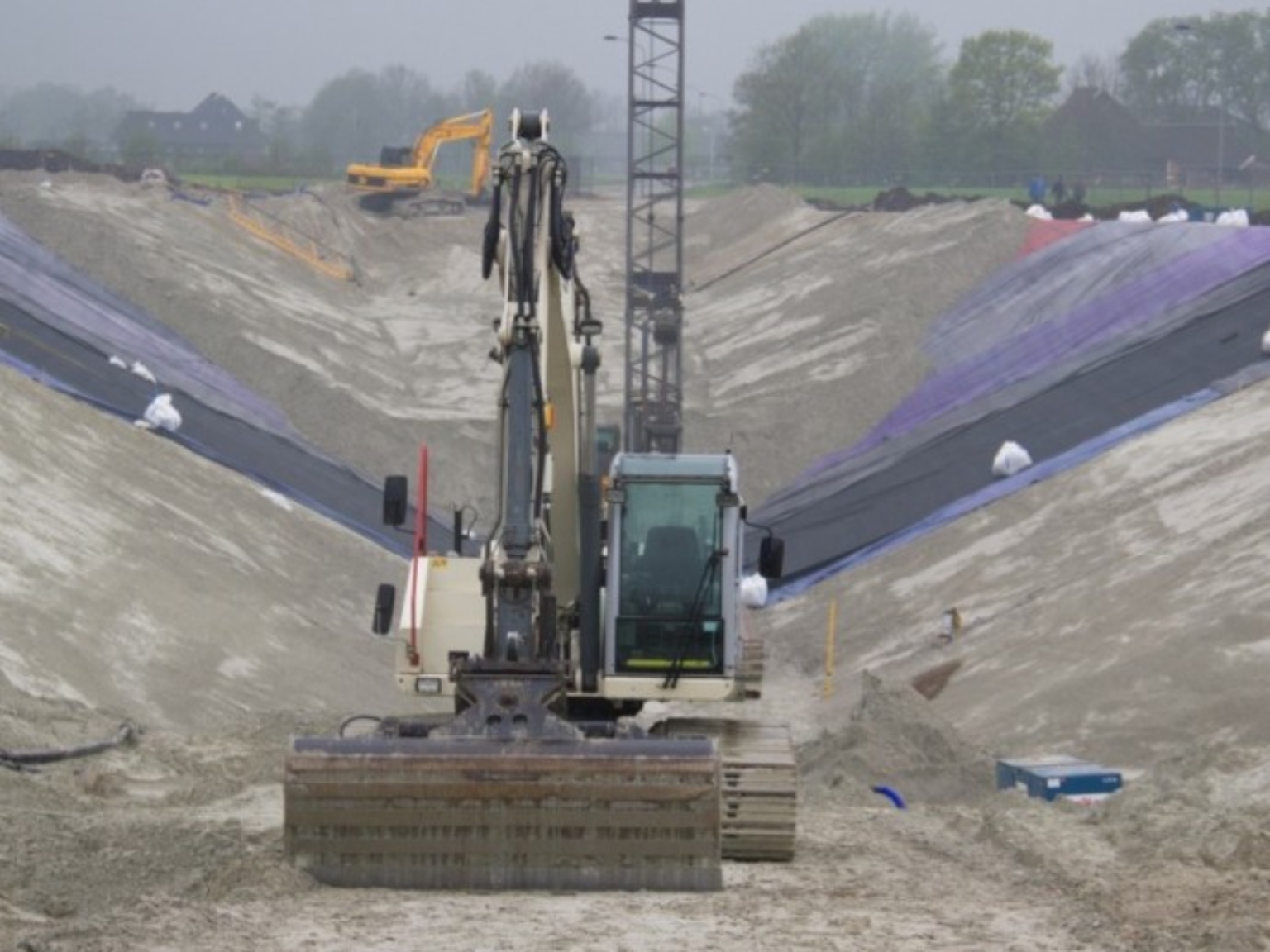Would you like more information or non-binding advice? Please fill in the form below and we will contact you as soon as possible.
"*" indicates required fields
A geomembrane system serving as a top or bottom seals is often utilized to isolate contaminants, directly safeguard the environment, or protect against potential future pollution. Bottom seals are notably used in facilities like tank terminals, while a combination of bottom and top seals is often found in landfill sites.
Such sealing processes require execution under a certificate of installation by a certified entity. Since 1997, Genap has maintained the rigorous KIWA certification, underscoring our commitment to quality and environmental protection.
Typically, a 2mm HDPE geomembrane is used for both types of seals. This specification aligns with current guidelines for the use of geomembrane constructions to protect the environment and/or comply with landfill base protection regulations. For top seals, the geomembrane might feature a textured surface to prevent the slippage of the sand layer on slopes. Depending on the project, our engineering department offers tailored advice on the necessary geomembrane for a secure slope construction, including the potential need for additional elements like drainage mats or geogrids.
The desired dimensions and shapes of the geomembrane seal are assembled on-site from rolls of approximately 7 meters wide. Here at Genap, we have the capability to tailor-make openings and fittings for pipelines, concrete structures, and beacon enclosures.

Genap offers various landfill sealing solutions to prevent soil contamination, air, and water pollution.

The ClosureTurf® is engineered to fulfill the long-term required coverage of a landfill across various weather conditions.

Our bottomseals serve as an additional protective layer beneath the storage tanks to prevent leakages and soil contamination.

Geosynthetic clay liners are used as sealing layers in various applications, ranging from water construction projects to landfills and reservoirs.

The underpass of Koailoane, part of "De Centrale As" between Dokkum and Drachten, combines an elevated cycle path with a wildlife passage. Genap installed a liquid-proof membrane to keep the groundwater out, covered with ballast. For this innovative project, 150,000 m² of membrane was used to complete it.

Since 2013, the 'Third Merwede Harbor' landfill site is no longer in use. To transform the hill into a recreational area, the landfill is covered with a geomembrane construction to separate rainwater from the waste mound.
